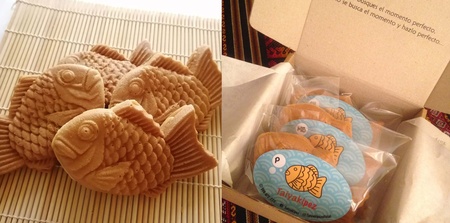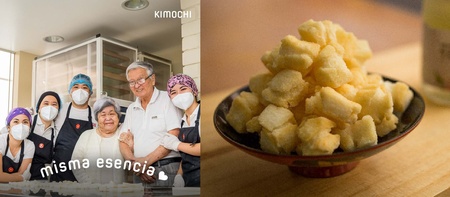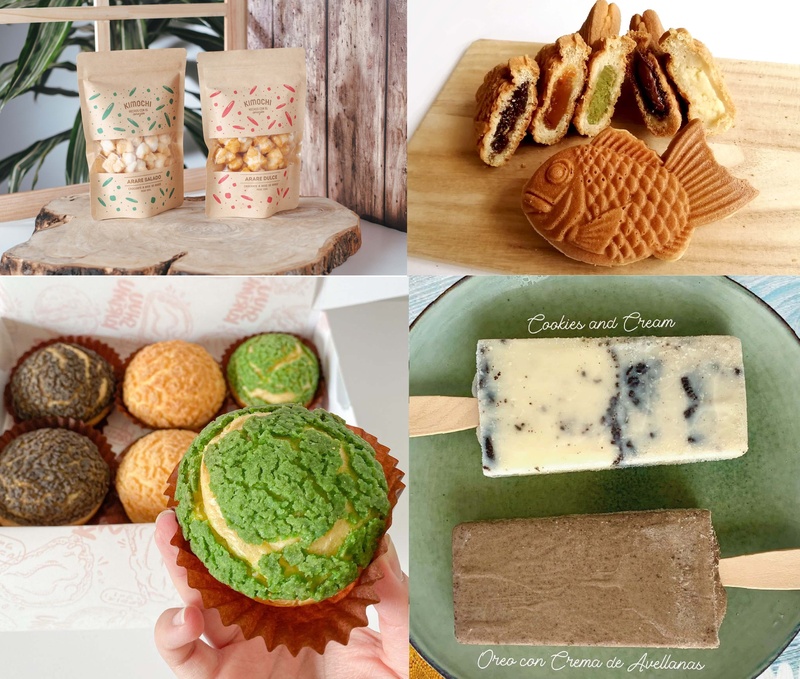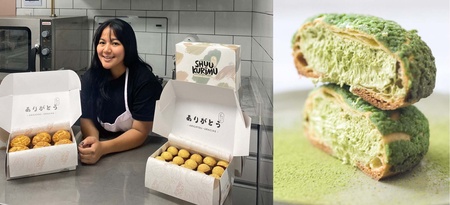It can be said that the popularity of Peruvian Nikkei cuisine is now indisputable. From makis and their fusions with Creole ingredients, to other preparations that have been gaining ground with restaurants and events in the Peruvian-Japanese community (in the former, ramen soups have become known and in the latter, obento have been introduced), Nikkei cuisine dishes are increasingly on the lips of more Peruvians and tourists.
In recent years, motivated by reinvention, which drove many Nikkei towards entrepreneurship, and the restrictions of the pandemic, which directed gastronomic consumption at home, growing home delivery, there are new preparations based on Japanese culinary culture that They are being offered in different Lima districts. Among them, those that are attracting the most attention are Nikkei sweets and desserts, or those that use some of their most traditional ingredients.
Ice cream with matcha tea, the legendary taiyaki (Japanese fish-shaped cake with various fillings), mochis (sweet colorful glutinous rice doughs with different flavors), arare (Japanese crispy rice), shu kurimu (Japanese profiteroles) and Other Japanese desserts, with diverse influences, are circulating through the streets of Lima, in home deliveries or in special stands. The list of brands is still short, but the culinary offering is becoming broader. The stories are always very rich and inspiring.
summer sweet
Between December and March are the hottest months in Lima, although the consumption of ice cream or ice pops may be extended due to the warmth of the climate. Matcha green tea ice creams are very popular in Japan and in some Latin countries such as Mexico, Peru and Chile, they are also consumed in industrial, artisanal and homemade productions. In Lima, one of the first brands was Mr. Matcha, for artisanal ice cream and mochi filled with ice cream. Its freezers were in stores and other places between 2016 and 2020.
In recent years, frozen popsicles with fillings have gained greater prominence and a brand that has been very popular is Kuru Kuru Helados , specialized in this product with which they reach various points in Lima, through restaurants, cafes, stores and markets. oriental products from Pueblo Libre, Jesús María, Miraflores, San Borja, Surquillo and Surco, in addition to being present in the Barrio Nikkei and Kyodai Market virtual stores.
In an interview , Marlene Ota, partner of Kuru Kuru Helados, explains that there is a growing culture of artisanal ice cream. “We started with 34 flavors in our first store and now we have a smaller menu in which we had to have something Nikkei. Coming up with the matcha tea recipe was difficult.” On their menu they have fruity and creamy popsicles (here's the one with green tea), stuffed ones (with strawberry, mango, lucuma, among others) and mini-popsicles (minikurus). They also offer Japanese pastries filled with matcha, among other seasonal novelties.
Japanese desserts
Japanese pastries have been greatly influenced by French ones. In Peru, Carlos Yanahura has been a pioneer with Yogashi Patisserie , whose location opened in San Borja in 2012, with dozens of French pastries, Japanese techniques and Peruvian ingredients such as lucuma, cherimoya and soursop, among other ingredients combined with chocolates with a high percentage of cocoa. They currently maintain their premises and have a wide coverage radius for deliveries, which include a wide variety of bakery products and individual cakes. Among the most striking is the croissant with almonds and matcha.
Yumiko Cabrejos Matayoshi worked here, where she learned to make fine pastries and began selling them to her friends and acquaintances, until during the pandemic she launched the brand Shuu kurimu (“Choux cream”), the Japanese profiteroles popularized by a French chef and now They have a very marked identity, lighter, which can now be enjoyed in Lima. “I was looking for an innovative product, to offer something new, I had tried them in Japan.”
The choux pastry (the dough) and the pastry cream are the main ingredients of this dessert that can include whipped cream, and in Shuu kurimu it has a cookie topping in six flavors: vanilla, oreo, bananoffe, choco lucuma, strawberry and matcha . They also make French macarons. "Nikkei desserts are little by little becoming more popular, customers always mention to me that they are not cloying and they can eat several, they love the packaging we have and usually send it as a gift to their loved ones."
Sweet in fish
History has it that taiyaki was served as a dessert at ceremonies and special events. This dessert similar to a waffle, and whose name means 'roasted fish', always took the shape of that animal with different fillings. In Lima, the Kumo ice cream parlor already offered them in 2017, with cream ice cream, and in 2018 Taiyakipez , by Isabel Oka, emerged in connection with the Nikkei Gochiso gastronomic festival and the great public acceptance they had at the event.

“Little by little we have been growing, every detail adds up and we worry so that everything is done in the best possible way,” says Isabel, who offers a special recipe, which her obachan took from some old notebooks. “She was always in charge of maintaining the Japanese legacy and customs, such as mochi on New Year's, among others. He gave me his recipe, I tried it and over time I have varied it a little to make it more palatable,” says Isabel.
Among the fillings they offer are those with pastry cream, blancmange and chocolate, and the special ones with matcha and hazelnut cream. Isabel says that, at first, Taiyakipez was only known in Nikkei circles, and today they receive more orders thanks to social networks. “There are many people who take the time to tell us their experience when trying them and that gives us strength to continue.” The pandemic caused them to paralyze everything, which caused them to fear losing their progress, but happily they have been able to reactivate their production and be part of new projects, starting to work with restaurants and with the aim of continuing to spread Japanese culinary culture.
A healthy craving
Finally, the must-have to accompany those nights of cravings is arare, a rice-based snack (sweet or salty) that can replace pop corn in streaming marathons at home. Kimochi is the brand with which Rocío Harada and Mariella Guibo offer it along with the apple delight and the brownie, which come from a family recipe with history. “The business was started by my parents, Teru and Pedro Harada, in the nineties, a difficult time in which my older brothers had to go to work in Japan,” says Rocío.

They began offering food they produced (chifles, kekes, cakes, donuts, apple delicacy and arares) to community institutions, in addition to wineries and businesses owned by acquaintances and friends. Rocío and Mariella chose the name “Kimochi” because it was a word that they heard a lot at home as a symbol of dedication, “of doing things with love, without expecting anything in return.” Both grew up with the Nikkei obachan, Creole and Japanese cuisine, which now has its mark.
“Being an entrepreneur is not easy, we must have strength and discipline to follow the path. One must continue learning and, although we often make mistakes, we must get up and continue seeing the future with optimism,” says this duo of businesswomen who, due to the pandemic, had to stop production. “We prioritize our health and that of our families, and we were also affected by the increase in the cost of our supplies, since many are imported.” Luckily, since they restarted service they have seen that there was an audience waiting for their return. “Delivery helped us a lot, in addition to sending home we can supply more online markets and physical stores.”
© 2021 Javier García Wong-Kit







